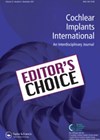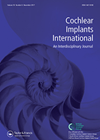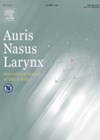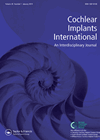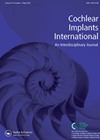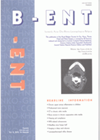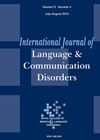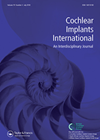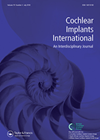
Journal Reviews
Music training for cochlear implant users
The ability to enjoy music is something that is important to most people and contributes to wellbeing, as well as holding cultural significance. However, the speech signal is generally prioritised for those with cochlear implants (and indeed hearing aids). Improving...
Impedance for different electrode types
Measuring cochlear implant (CI) electrode impedances is common in CI programming appointments to measure the integrity of the implant e.g. whether there are any open or short electrodes. This is because impedance measures the flow of current between intra and...
Satisfaction levels in elderly patients with cochlear implants
Hearing rehabilitation in the elderly is of utmost importance as it is associated with depression and dementia in this age group. Cochlear implantation is indicated for hearing-impaired individuals who do not derive adequate benefit from conventional hearing aids. In this...
X-ray vs. intraoperative testing for determining cochlear implant placement
Most cochlear implant centres confirm electrode position after surgery using X-rays to ensure optimal electrode placement. As well as transorbital view X-rays, this team check placement using impedance measures and neural response telemetry (NRT) performed intraoperatively. The former indicates whether...
Sound localisation after bilateral cochlear implantation
Limited information is known about the localisation skills of paediatric cochlear implant patients who were good hearing aid users before their hearing deteriorated. As localisation is a skill often associated with good natural hearing, there is a worry that implants...
Predicting speech recognition in adults with cochlear implants
This was a combined prospective and retrospective study from Belgium that looked at factors influencing speech recognition scores in quiet conditions (retrospectively) and speech reception threshold levels (SRT) in fixed noise conditions (prospectively) after cochlear implantation in postlingually deaf adults....
A new modified double-flap technique for cochlear implant surgery
The authors retrospectively assessed 342 implantees with a minimum of five years’ follow-up who had been implanted using a lazy S-shaped post auricular incision with a modified double-flap technique. From the notes, postoperative wound complications and any other adverse events...
Which factors affect music involvement in implanted children’s everyday life?
During the last few years, cochlear implantation research has included music. Processing strategies and rehabilitation teams are now interested in music appreciation by implantees, as speech perception and production are no longer the only issues or targets. The present study...
Supporting second language in bilingual children with cochlear implants
There have been mixed reports regarding the benefits of supporting two languages for bilingual children using cochlear implants. With an ever-increasing number of children with hearing loss undergoing cochlear implantation, this study provides timely clinical evidence. The authors studied the...
Differences in timbral cues’ perception between teenagers with cochlear implants and those with normal hearing
The authors aimed to assess timbral cues’ perception of teenagers with cochlear implants and compare it to the respective perception of normally hearing teenagers. Thirty-four teenagers were included in the study, nine Korean adolescents with cochlear implants and 25 adolescents...
How do the rejected candidates for cochlear implantation feel?
This interesting study from the UK explored, using personal interviews, how rejected candidates for cochlear implantation feel and deal with the decision not to implant. The authors assessed 10 adult cochlear implant candidates who had undergone the evaluation process were...

